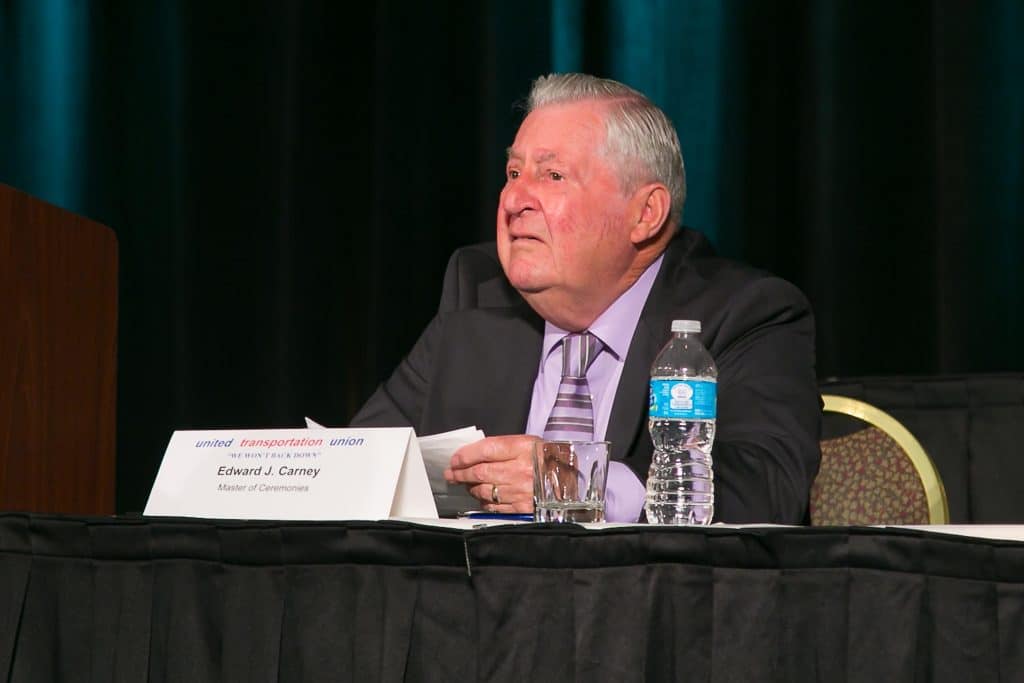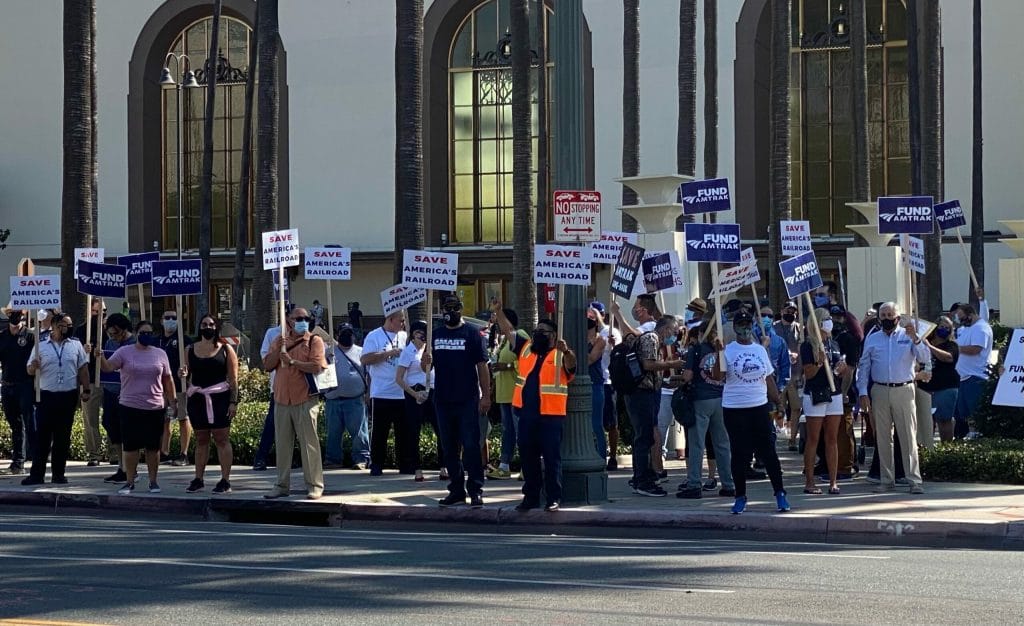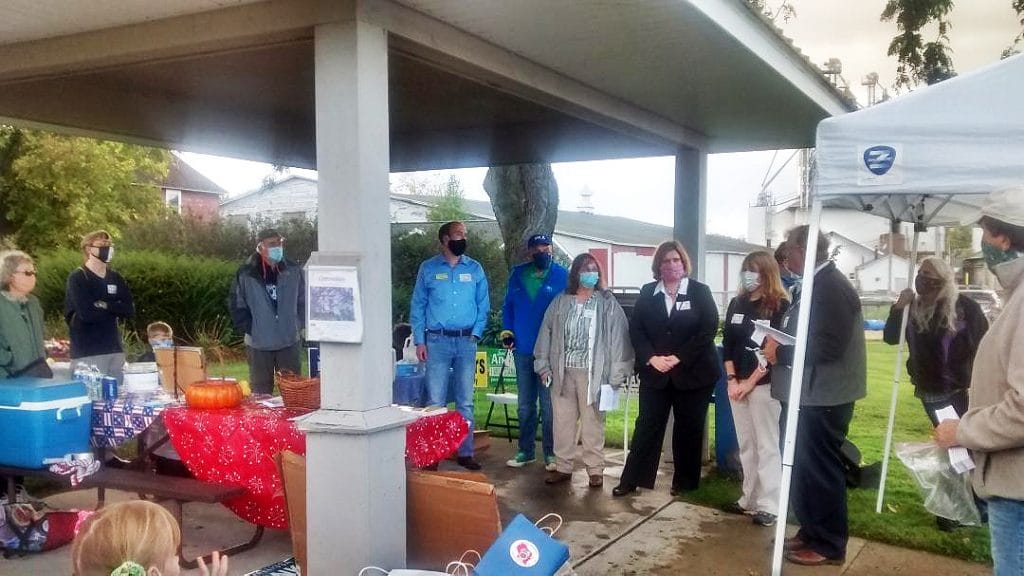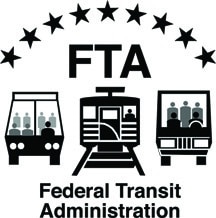
Click here to read the posted notice in the Federal Register.
Author: amyr

In the safety alert, SOFA warned, “the SOFA Working Group is concerned by the 159 injuries that occurred this year through August 31, 2020, and reminds all employees to remain vigilant during switching operations by not only protecting the shove movement, but also protecting themselves by avoiding close or no clearance hazards. Last, but not least, remember to always hold a job briefing whenever the job or situation changes.”
Click here to read the full safety alert.
In their “SOFA Lifesavers – Why Job Brief?” notice, SOFA details the importance to perform job briefings and points out that one in five switching operations fatalities lacked an adequate job briefing.
Click here to read SOFA Lifesavers – Why Job Brief?
The Switching Operations Fatality Analysis working group was formed by the Federal Railroad Administration in the early 1990s in an effort to analyze switching accidents and prevent future accidents and fatalities. The group consists of representatives from the FRA, labor and management.
Click here to visit SMART-TD’s SOFA page where these and other SOFA documents are available.

Carney began his railroading career on the Staten Island Railroad, a subsidiary of the B&O Railroad, in June 1955. Over the course of his 40 years of railroad employment, he worked as a conductor in freight, passenger, yard and road service.
Brother Carney took an interest in union affairs and became the local chairperson of the Brotherhood of Railroad Trainmen Lodge 560, representing conductors and trainmen on the Staten Island Railroad, in October 1963. After numerous representation elections on the property, he eventually came to represent conductors, trainmen, engineers, signalmen, maintenance-of-way employees, electricians, boilermakers, machinists, car inspectors and car cleaners. Brother Carney held the position of local chairperson for over 30 years, during which time he became the local chairperson of Local 1440 in Staten Island, N.Y. Carney also served as a local delegate for more than 30 years and attended seven United Transportation Union (UTU) quadrennial conventions.
He also served on the UTU Board of Appeals for two terms from 1992 through 1999. Carney was a member of the union for more than 40 years. Many will remember Brother Carney as the master of ceremonies at numerous UTU regional meetings and conventions. He always had a joke or two prepared at the events and always graced us with his voice to sing both the U.S. and Canadian national anthems. A U.S. Army veteran, Carney always paused at each event he emceed to recognize his fellow brothers and sisters in arms. He retired from his position of master of ceremonies at the close of the 2013 regional meetings in Boston and Anaheim.
Visitation for Brother Carney was Monday, November 9 from 4 – 9 p.m., Tuesday November 10 from 2 – 4 p.m. and 7 – 9 p.m. at the Martin Hughes Funeral Home, 530 Narrows Rd. S., Staten Island, NY 10304. A Mass of Christian Burial will be held Wednesday, November 11 at 10:15 a.m. at St. Charles Roman Catholic Church, 200 Penn Ave., Staten Island, NY 10306, interment will follow at 12:15 p.m. at St. Mary’s Cemetery, 155 Parkinson Ave., Staten Island, NY 10305.
Click here to read Brother Carney’s official obituary.

Since most interstate railroad workers’ payroll taxes are diverted to the RRB, unemployed railroad workers are not eligible for federal unemployment insurance benefits, which was not subject to the sequester. This resulted in railroad workers taking a cut in expected benefits that the general public was not subject to. This is particularly concerning during the ongoing COVID-19 pandemic. In 2019, the RRB received 35,030 unemployment claims. As of September 2020, it has received 133,899 claims, nearly a fourfold increase.
“I’m proud to introduce this bipartisan legislation to ensure that unemployed railroad workers receive fair and equal unemployment benefits. This legislation would remove the harmful sequester that largely singled out railroad workers’ unemployment benefits during the ongoing COVID-19 pandemic. The impact of the sequester has meant these railroad workers have not received the full unemployment insurance benefits that are due to them. The COVID-19 pandemic has caused nearly five times as many Ohio railroad workers to lose their jobs through no fault of their own and I urge my colleagues to join me in ensuring they are eligible for the same full unemployment benefits as all Americans,” said Portman.
“Our workers are facing enormous challenges due to the coronavirus pandemic and railroad workers have been hit particularly hard,” Klobuchar said. “This legislation ensures railroad employees are eligible for the same benefits as other workers and will help them get through these trying times.”
S. 4860 was read twice before the Senate Oct. 26 and referred to the Committee on the Budget. No other actions have taken place.
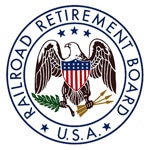
This popular program has become a valuable resource to RRB customers and employees alike. It helps promote a better understanding of our benefit programs among the railroad community, and in turn, improves the effectiveness of our benefit program operations.
While we typically conduct several seminars across the country annually, we were forced to cancel all in-person events this year due to the COVID-19 outbreak. This provided us with the unique opportunity to reimagine our platform capabilities and prioritize creating a web version of the seminar.
To access the video online, visit RRB.gov/PRS and click on View Pre-Retirement Seminar Presentation. Because we cover several aspects of railroad retirement benefits in great detail, the entire presentation is over an hour long. View shorter segments of the program by selecting a seminar topic on the same web page. Available topics include: Retired Employee and Spouse Benefits, Spouse Annuities, Working After Retirement, Survivor Benefits, and Items Affecting All Retirement and Survivor Benefits.
At this time, unemployment and sickness benefits are not covered in the program because of the ongoing uncertainty of additional COVID-19 relief legislation. We recommend visiting RRB.gov/coronavirus for the most up-to-date information.

Cost-of-living increases are calculated in both the tier I and tier II benefits included in a railroad retirement annuity. Tier I benefits, like social security benefits, will increase by 1.3 percent, which is the percentage of the CPI rise. Tier II benefits will go up by 0.4 percent, which is 32.5 percent of the CPI increase. Vested dual benefit payments and supplemental annuities also paid by the Railroad Retirement Board (RRB) are not adjusted for the CPI change.
In January 2021, the average regular railroad retirement employee annuity will increase $30 a month to $2,936 and the average of combined benefits for an employee and spouse will increase $42 a month to $4,263. For those aged widow(er)s eligible for an increase, the average annuity will increase $16 a month to $1,453. However, widow(er)s whose annuities are being paid under the Railroad Retirement and Survivors’ Improvement Act of 2001 will not receive annual cost-of-living adjustments until their annuity amount is exceeded by the amount that would have been paid under prior law, counting all interim cost-of-living increases otherwise payable. About 54 percent of the widow(er)s on the RRB’s rolls are being paid under the 2001 law.
If a railroad retirement or survivor annuitant also receives a social security or other government benefit, such as a public service pension, any cost-of-living increase in that benefit will offset the increased tier I benefit. However, tier II cost-of-living increases are not reduced by increases in other government benefits. If a widow(er) whose annuity is being paid under the 2001 law is also entitled to an increased government benefit, her or his railroad retirement survivor annuity may decrease.
However, the total amount of the combined railroad retirement widow(er)’s annuity and other government benefits will not be less than the total payable before the cost-of-living increase and any increase in Medicare premium deductions.
The cost-of-living increase follows a tier I increase of 1.6 percent in January 2020 and 2.8 percent in January 2019, the latter of which had been the largest in 7 years. The Centers for Medicare and Medicaid Services will announce Medicare Part B premiums for 2021 later this year, and this information will be available then at www.medicare.gov.
In late December the RRB will mail notices to all annuitants providing a breakdown of the annuity rates payable to them in January 2021.

On Sept. 9, Amtrak President and CEO William Flynn appeared before a U.S. House committee saying that the carrier needs approximately $5 billion in emergency funding to deal with the effects of the COVID-19 pandemic.
If no additional funding is provided by the federal government, the carrier has announced cuts, effective Oct. 1, of approximately 2,000 unionized employees and a planned reduction of service that would hit long-distance and state-run routes that serve rural areas especially hard.
Rallies were scheduled by SMART-TD and other unions to take place a day before the planned cuts in four major cities: Washington, D.C., New York City, Chicago and Los Angeles.
In a show of support for Amtrak funding and in an effort to raise awareness, Wisconsin State Legislative Director Andy Hauck and Michigan State Legislative Director Donald Roach, with the help of Local 168 member Nate Hatton (Dearborn, Mich.), also led the members in conducting pop-up rallies in Milwaukee and Dearborn, Mich., respectively.
Chicago
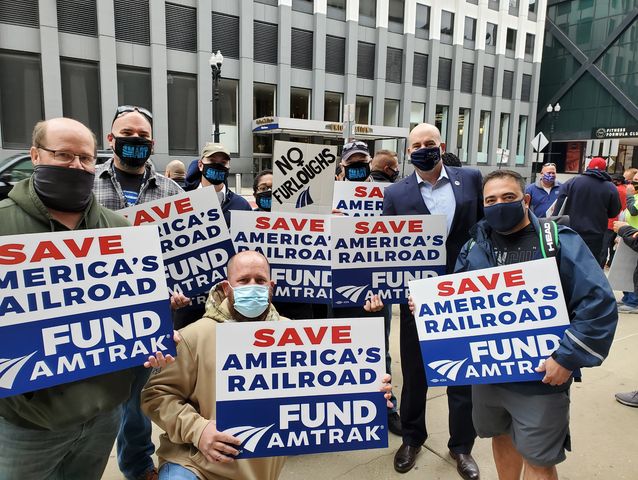
Ferguson continued to address the assembled crowd, “We bust our butts, day in and day out, to give our country this service, and this is what the board wants to do. Now you guys have gone one step further, you Amtrak employees. You voted to waive off your pay increase this past July. You did what was best for this country and for Amtrak, didn’t you? How did you get repaid? With the threat of furlough tomorrow, right? Two thousand people could be in the streets tomorrow!”
Ferguson also pointed out that Amtrak management is restarting their salaries and 401(k) contributions coinciding with the Oct. 1 scheduled implementation date of furloughs of 2,000 union members. He also stated that Amtrak management has restructured their bonus program to better benefit themselves.
“We’re not going to take that! We’re not going to stand for that! Not when you gave up your pay raises to protect this country and this service! Unheard of! So, let’s get busy out there! Let’s get fired up!”
Washington, D.C.
Meanwhile, at a rally outside the U.S. Capitol building, SMART General President Joe Sellers gave a rousing speech to the crowd featuring many members employed by Amtrak who might lose their jobs.
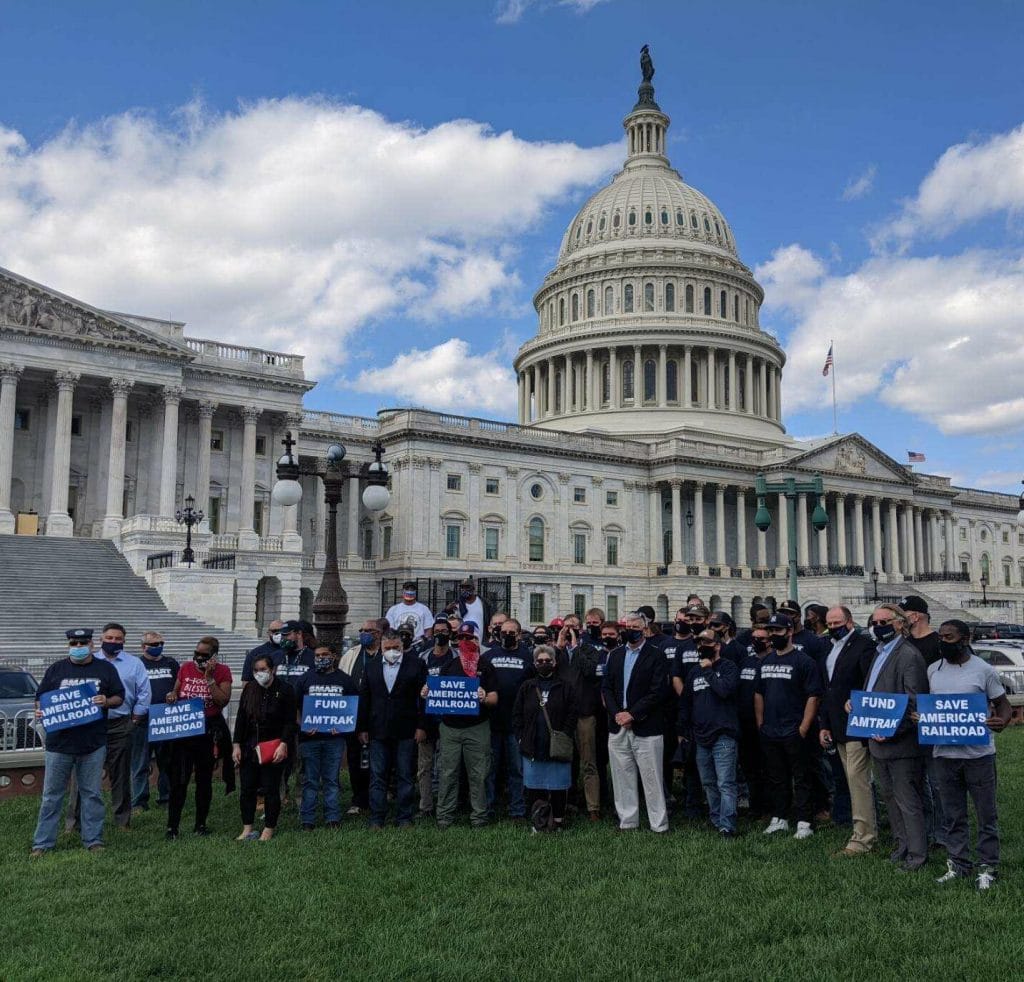
Sellers pointed out that the HEROES Act, or H.R. 6800, was relaunched on May 15, 2020, and has yet to be voted on by the U.S. Senate. “We need to make sure that the new relaunched HEROES Act is passed. To protect you. To protect essential workers. To protect the job that you do, day in and day out,” Sellers said.
Sellers concluded his fiery speech by thanking our essential Amtrak members, “I want to thank you for the work that you do, and Congress should be thanking you for the work that you do day in and day out! We need the Senate to make sure that they take this seriously. The White House is dragging their feet. The Senate is dragging their feet. That is unacceptable! Thank you, brothers and sisters. We are going to make a difference and we are going to effect change. We are going to effect change in November, and we are going to carry this through.”
SMART-TD Alternate National Legislative Director Jared Cassity was also featured in a report that aired on Fox 5 News in D.C. at the rally and U.S. Reps. Tim Ryan of Ohio and Stephen Lynch of Massachusetts also spoke at the rally.
New York City and Los Angeles, Calif. 
General Chairperson Anthony Simon (Long Island Railroad) and Scott Carey, legislative representative of Local 95 (Albany, N.Y.), took part in a rally with BLET and TCU members outside Penn Station, while California State Legislative Director Louis Costa led a morning demonstration in front of L.A.’s Union Station.
Dearborn, Mich.
In Dearborn, Hatton told the Arab American News, “This is a slap in the face to all the essential workers who have been serving the public throughout the pandemic — sacrificing their health and time with their families and loved ones. In 2019, we moved a total of 1,540,972 passengers on the Michigan Corridor. In Dearborn alone, we boarded and deboarded 73,589 passengers. When this pandemic first began, we were told not to wear masks or gloves as it would frighten passengers, while management was told to work 
SLD Donald Roach also pointed out to the news outlet that H.R. 2, the Moving Forward Act, which included funding for Amtrak, passed the House on July 1 and has stalled on U.S. Senate Majority Leader Mitch McConnell’s desk.
“This cut from Amtrak is not just employees being furloughed, it’s reducing service from three trains a day in both directions, east and west, to one train a day to Chicago and the shutdown of the Grand Rapids–to–Chicago line,” Roach said.
Local 168 member Joel Myers was there rallying along with one of his two children. Myers stands to lose a lot if furloughed with one of his sons currently going through chemotherapy treatments.
“If we are all furloughed, we will need to figure out how to keep food on the table for our families,” Hatton told the Arab American News. “We will be losing a great public utility. This will greatly impact Dearborn and the Metro Detroit area as this is a mode of transportation that people rely on.”
Milwaukee 
In Wisconsin, SMART members along with All Aboard Wisconsin boarded the Amtrak Empire Builder and rode to Wisconsin Dells, SLD Andy Hauck told SMART-TD. “We had press coverage at both locations and an event in Wisconsin Dells. The train crew was excellent. [The riders] included six legislators and prospective legislators that SMART-TD has supported.”
—
The rallies caught the notice of Democratic presidential candidate Joe Biden, who embarked on a whistle-stop tour aboard an Amtrak train that departed from Cleveland the day after the first presidential debate and later went into Pennsylvania.
“It’s safe to say I’ve gotten to know the hardworking men and women of @Amtrak over the years — I’m proud to stand with them as they face furloughs due to funding cuts. These essential workers have kept us moving during this pandemic –– now it’s time we have their backs,” Biden’s tweet the evening of Sept. 30 read.
SMART-TD is urging members to contact Congress about passing emergency funding for Amtrak. Not only are the livelihoods of SMART and other union members at stake, but Railroad Retirement will also take a huge hit to its funding if these layoffs stick.
Click here to easily contact your representatives in Congress.
Railroad Unemployment and Sickness Benefits Will See Slight Decrease in New Sequestration Reduction Rate

Starting October 1, 2020, the U.S. Railroad Retirement Board (RRB) will reduce railroad unemployment and sickness insurance benefits by 5.7%, down from the current 5.9% reduction, as required by law. The adjusted reduction amount is based on revised projections of benefit claims and payments under the Railroad Unemployment Insurance Act and will remain in effect through September 30, 2021, the end of the fiscal year. Reductions in future fiscal years, should they occur, will be calculated based on applicable law.
The current daily benefit rate for both unemployment and sickness is $80.00. Applying the sequestration rate of 5.7%, the maximum amount payable in a two-week period will be reduced from $800.00 to $754.40. Sickness benefits paid to an employee within six months from the date last worked for a reason other than an on-the-job injury are also subject to regular tier I railroad retirement taxes, resulting in a further reduction of 7.65%. Applying the 5.7% reduction to these sickness benefits will result in a maximum two-week total of $696.69.
In fiscal year 2019, the RRB paid about $13 billion in retirement and survivor benefits to about 535,000 beneficiaries, and net unemployment-sickness benefits of about $93.4 million to approximately 23,000 claimants.
The Honorable Frank Pallone, Jr.
Chairman
House Committee on Energy & Commerce
2125 Rayburn House Office Building
Washington, DC 20515
The Honorable Greg Walden
Ranking Member
House Committee on Energy & Commerce
2322 Rayburn House Office Building
Washington, DC 20515
Dear Chairman Pallone and Ranking Member Walden:
While the COVID-19 pandemic continues to present our country with unprecedented challenges, we urge you to continue to focus your attention on this ongoing public health and economic crisis. In particular, we believe that continued efforts to pass automated vehicle legislation at this critical juncture in world history would be a grave mistake.
A record 16.8 million Americans have sought unemployment aid due to the COVID-19 pandemic. With rising utility costs, families who were already struggling to make ends meet will now have to decide between putting enough food on the table for their families or keeping their energy on and their water running. Many employees who have been deemed essential during this crisis— healthcare workers and corner market cashiers—are working every day without proper personal protective equipment, putting their own health and the health of their families in jeopardy. Millions of Americans remain uninsured and were already living a day-to-day health crisis before the COVID-19 outbreak, just one injury or illness away from financial ruin. And schools across the country have sent millions of children home for the remainder of the year, yet 4 million households with school-age children lack internet, leaving them unable to participate in online learning.
Despite these unparalleled challenges, Energy and Commerce Committee Republicans published an article last week entitled “Self-Driving Cars Can Pave Way during COVID-19. Let’s do so in the U.S.” While we welcome the debate on the safety and economic effects of this technology under normal circumstances, it is unconscionable to prioritize such a serious and controversial set of regulatory changes over addressing critical services like healthcare, internet, utilities and personal protective equipment. Despite what AV boosters are claiming, there are no realistic opportunities for this technology to meaningfully ease the immediate pains Americans are facing during this crisis.
To be clear, we wholeheartedly agree that more needs to be done in Congress to properly regulate automated vehicles once we have defeated the ongoing pandemic. Their record of safety and their potential to displace millions of good American jobs demands additional hearings and a measured, appropriate legislative response from your committee. We welcome the opportunity to work with the committee on both topics to assist you in your work after the immediate and ongoing needs of the American people have been addressed.
We thank you for your time and consideration on this matter, and we look forward to having further discussions with your committee about this topic at the appropriate time.
Sincerely,
Amalgamated Transit Union
International Brotherhood of Teamsters
SMART-Transportation Division
Transportation Trades Department, AFL-CIO
Transport Workers Union of America
Click here to view a pdf of this letter.
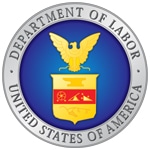
During the coronavirus outbreak, OSHA area offices will utilize their inspection resources to fulfill mission essential functions and protect workers exposed to the disease. The response plan contains interim procedures that allow flexibility and discretion for field offices to maximize OSHA’s impact in securing safe workplaces in this evolving environment.
“OSHA is committed to protecting the health and safety of America’s workers during this challenging time in our nation’s history,” Principal Deputy Assistant Secretary Loren Sweatt said. “Today’s guidance outlines commonsense procedures for investigating complaints related to the coronavirus, while also ensuring the safety of workers, employers and inspectors.”
The response plan outlines procedures for addressing reports of workplace hazards related to the coronavirus. Fatalities and imminent danger exposures related to the coronavirus will be prioritized for on-site inspections. The response plan contains procedures and sample documentation for CSHOs to use during coronavirus-related inspections. Workers requesting inspections, complaining of coronavirus exposure or reporting illnesses may be protected under one or more whistleblower statutes and will be informed of their protections from retaliation.
This memorandum will take effect immediately and remain in effect until further notice. It is intended to be time-limited to the current public health crisis. Check OSHA’s webpage at www.osha.gov/coronavirus frequently for updates.
Under the Occupational Safety and Health Act of 1970, employers are responsible for providing safe and healthful workplaces for their employees. OSHA’s role is to help ensure these conditions for America’s working men and women by setting and enforcing standards, and providing training, education and assistance. For more information, visit www.osha.gov.
The mission of the Department of Labor is to foster, promote and develop the welfare of the wage earners, job seekers and retirees of the United States; improve working conditions; advance opportunities for profitable employment and assure work-related benefits and rights.
